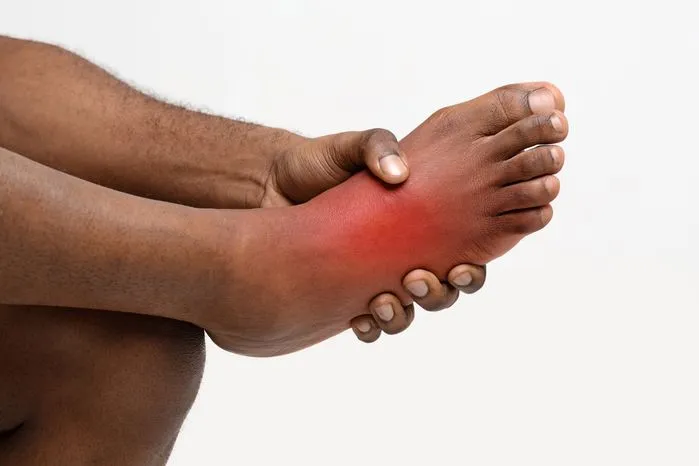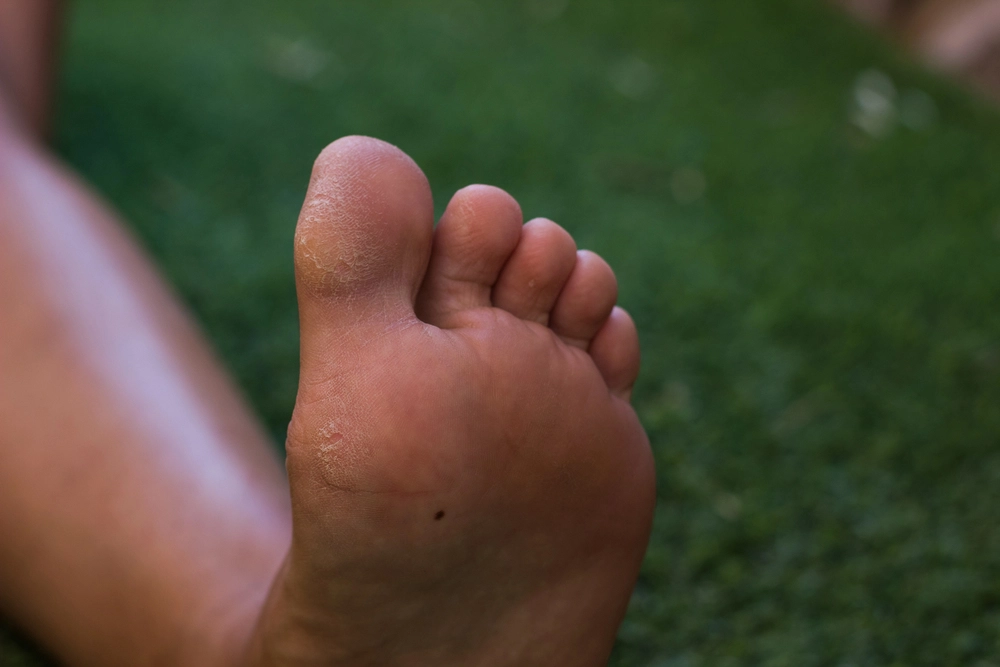
Releford Institute’s Opinion on Recognizing Early-Stage Diabetes
Early-stage diabetes often shows up in the feet first, so monitoring them closely is crucial. At Releford Institute, we always tell my patients that even minor changes like tingling, numbness, or dry skin can indicate underlying problems. These can be early signs of nerve damage or circulation issues.
Key Takeaways
- Signs of diabetes in the early stages often manifest in the feet, such as numbness, skin transformations, a sensation of cold, color variations, and sores that take a long time to heal.
- Issues related to diabetic feet are numerous. Some affect your lifestyle while others impact your overall comfort.
- To prevent further complications, individuals should inspect their feet regularly for any injuries, blisters, or signs of inflammation, while also prioritizing cleanliness.
- Adopting certain foot care habits is necessary regardless if you have this illness or not. These practices include moisturizing the skin, selecting shoes that fit properly, and promoting better blood flow through physical activity.
- Regular foot examinations by healthcare professionals and guidance on optimal foot care are vital for managing this disease effectively.
Understanding Early Stage Diabetes
Identifying diabetes at an early stage requires vigilance to its signs. This chronic illness, known for causing high blood sugar levels, may reveal itself through various symptoms. Often, these signs get mistaken for less severe issues.
Insulin resistance, the main factor behind diabetes, happens when cells in our bodies fail to respond to insulin. Insulin is a hormone that regulates glucose in our bloodstream. This resistance causes glucose accumulation leading to high blood sugar.
Early signs of diabetes like increased hunger, thirst, frequent urination, fatigue, and unexplained weight loss help in early detection. Symptoms related to foot health such as tingling sensations, numbness, or pain, indicate nerve damage due to prolonged high blood sugar levels.
Primary Foot Symptoms to Monitor
Numb feet serve as a primary symptom to watch out for. This numbness can present as tingling or total loss of sensation, typically noticeable during physical activities or rest periods.
Skin changes on your feet signal potential diabetes. Dry, peeling, or cracked skin, along with slow-healing blisters and sores, requires careful monitoring. Failing to address these symptoms might result in severe complications.
Feet often feeling cold, even when your body is warm, is another symptom. Poor circulation in your body, a common diabetes issue, causes this. One might also observe a color change in their feet, especially if they turn red, blue, or purple.
Diabetic Foot Issues Explained
Often, issues related to diabetic feet intensify from mild to severe complications when neglected. These problems typically arise from two critical complications associated with diabetes: nerve damage known as neuropathy and issues with circulation.
Persistently high sugar levels lead to neuropathy, causing nerve damage, especially in feet. Such damage may manifest as pain, tingling, or even loss of sensation. Problems with circulation, alternatively, impede the foot's healing ability or its resistance to infection.
Some issues include peripheral neuropathy, foot ulcers, infections, and poor circulation. Knowing these issues enables timely intervention and prevents additional foot complications.
Caring for Diabetic Feet
Proper foot care helps prevent minor problems from becoming severe. This care revolves mainly around hygiene of the feet and maintaining good blood circulation.
Daily inspections for any cuts, blisters, or swelling are also important. Moisturizing feet prevents dryness and cracking, although one should avoid applying lotion between toes to discourage fungal growth. Wearing clean, dry socks and properly fitting shoes minimizes friction and pressure points.
Improving blood circulation is another key aspect of diabetic foot care. Regular exercise enhances circulation, just as abstaining from smoking can. Minimizing long periods of sitting or standing, coupled with elevating feet when resting, further assist circulation.
Seeking Professional Help
Managing diabetes requires professional assistance for foot care. Regular consultations with healthcare experts help detect initial signs of foot complications, preventing exacerbation. Here, diagnostic exams and specialist consultations prove essential.
Healthcare professionals may suggest:
- Examinations of Feet regularly: Skin changes, sores, or potential issues that could lead to complications are checked during these sessions.
- Tests for Diagnosis: Blood flow in feet and nerve function tests may be included to spot abnormalities.
- Referrals to Specialists: If your tests indicate a problem, a podiatrist, or a foot care expert, could be your next visit.
- Guidance on Caring for Feet: Healthcare experts instruct on proper foot care, including home-based issue detection.
- Recommendations for Therapeutic Footwear: To protect your feet and enhance comfort, special shoes or inserts could be prescribed.
Frequently Asked Questions
What are the symptoms of diabetic feet?
Symptoms include frequent foot pain, numbness or tingling, skin changes such as dryness or calluses, slow wound healing, and increased susceptibility to infections. In severe cases, there may also be noticeable deformities or visible ulcers.
Where do feet hurt with diabetes?
People with diabetes often experience foot pain in the balls of their feet, the toes, and the heels. This is due to peripheral neuropathy, a condition where the nerves in the feet are damaged due to high blood sugar levels.
What does an early diabetic foot look like?
An early diabetic foot may look red or swollen and may be warm to the touch. There may be cracks in the skin, especially around the heel, and the person may feel a burning or tingling sensation. The foot may also be less sensitive to touch and temperature.
What are the things you should never do to the feet of someone with diabetes?
Three things you should never do to the feet of someone with diabetes are ignore cuts or blisters, as they lead to serious infections, use over-the-counter remedies for corns or calluses without consulting a doctor, and walk barefoot, even indoors, as this increases the risk of injury.
What are pre-diabetic feet?
Pre-diabetic feet refers to the early signs of foot complications in people who have prediabetes. These symptoms include numbness, tingling, and pain in the feet, as well as changes in foot color or temperature.
How does diabetic foot start?
Diabetic foot often starts with peripheral neuropathy, which is nerve damage caused by high blood sugar levels. This leads to numbness and loss of sensation in the feet, making it easy to overlook minor injuries that progress into serious infections or ulcers.
How long is the life expectancy with diabetic foot?
The life expectancy of someone with a diabetic foot varies widely and depends on factors such as the severity of the condition, the person's overall health, and how well they manage their diabetes. However, studies have shown that the 5-year mortality rate after diabetic foot ulcer diagnosis can be up to 50%.
What color are diabetic feet?
Diabetic feet sometimes appear red or brown due to poor circulation or changes in skin color. In some cases, they may also turn blue or purple if the blood supply is severely restricted.
What do diabetic toenails look like?
Diabetic toenails often become yellowish and thicker than normal. They may also grow more slowly, become brittle, and develop ridges or other abnormalities.
Can diabetic feet be reversed?
Diabetic foot complications can't be reversed, but their progression can be slowed or stopped with proper management. This includes controlling blood sugar levels, regular foot inspections, proper foot care, and wearing appropriate footwear.
What color are diabetes fingernails?
Diabetes causes yellowing of the fingernails, similar to the toenails. This is often accompanied by them becoming thick, brittle, or developing ridges.
Is Vaseline good for diabetic feet?
Vaseline is beneficial for diabetic feet as it helps to keep the skin moisturized and prevent dryness and cracking. However, it should not be applied between the toes as this encourages fungal growth.


















